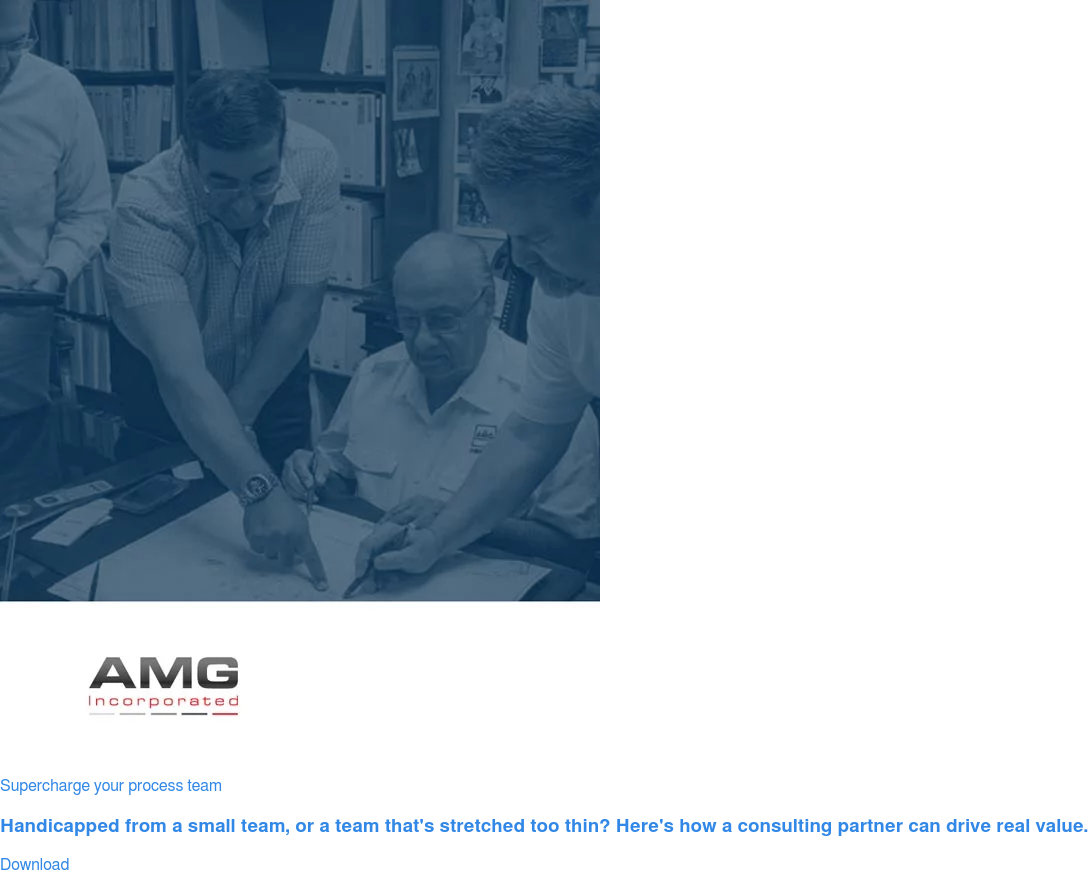You’ve likely been there.
Corporate has handed down a go-to market plan to bring a new product into the market by a specified date. Now, the pressure is on to figure out how to make it happen.
Within chemical, mineral, pharmaceutical, food additive, and other process related markets, process engineering teams are tasked with the complex processes to design, build and commission in order to bring new products to market. This, of course, requires a complex mix of chemistry, science, engineering, construction, and project management to get the job done—all of which present multi-faceted challenges and strains to the process and project team as a whole.
Throughout decades of engineering work supporting such teams, we’ve identified the top 5 challenges faced by nearly every process engineering team.
Challenge 1: You Face Aggressive Timelines and Budget Constraints from Corporate
As industries become more and more diversified and competitive, process teams will face increasing pressure to meet corporate demands at breakneck pace.
But as you know, it’s more than hitting a hard-stop date to flip the switch. To give the business the profitable solution it seeks, the process must be lean—meaning, it must be designed in a way that minimizes both initial capital costs and ongoing operating expenses. And, of course, it must be built on time and within budget.
Additionally, like new products themselves, new processes require an investment in R&D and pilot testing. The process must be vetted and verified before significant design and construction can begin. To combat the risk of failure, often times teams opt for a conservative engineering approach—which usually drives increases in both CAPEX and OPEX.
Regardless of the approach, you must communicate effectively and proactively with corporate, regarding the timing and budget of the project. The more planning and testing you do up front, the more confidence you’ll win from upper management for future projects.
Challenge 2: You May Overlook Potential Cost Saving opportunities Due To Historically established Paradigms
As with any job function in any industry, you can find yourself stuck in a rut of “this is the way we’ve always done it” when it comes to designing and building your process. While the historical methods and practices are almost always founded on good engineering principles, they are historical, and new technologies and practices may have evolved.
An outside perspective may serve to challenge your thinking in a good way—identifying alternative materials, trades, or crafts that can help you achieve your end goals while saving precious capital. This partner can also help you reality check and validate project schedule to find opportunities to reduce the total project timeline or structure the various tasks, from procurement and engineering to construction, more effectively (read: efficiently).
Challenge 3: You Need To Maximize Your Resources
This is, potentially, the greatest challenge for process engineering teams: you have a lot to do, and you have few people to get it done.
Your sweet spot is in the chemistry and design of the process—not in the management of millions of pieces of data necessary to move a project from concept to completion. Your in-house team likely doesn’t have the bandwidth to develop the level of detail necessary, in the time allotted for tasks such as preliminary engineering, detailed P&IDs, equipment sizing and selection, HAZOPs studies, document control and management, or commissioning planning & execution. These are all vitally important components of a project—and each requires a significant commitment of attention, detail, and hours.
In reality, you need to multiply your team by addition,—allowing your in-house team to focus and excel in their areas of strength, while delegating the more time consuming, highly detailed tasks to a right-fit engineering partner. Identify where your weaknesses lie, and find an agency or consulting firm to fill the gaps.
Challenge 4: You Struggle To Give Construction Teams The Details They Need
We’ve often been called to the scene after a process team has handed their process drawings to a construction team—only to be stymied by thousands of questions from the construction teams. Why? Because construction teams require scores of data points to build the thing.
This is where many teams lose substantial amounts of money—and can prevent that loss by bringing an engineering team into the mix before construction.
While there are many opportunities to bring a team onboard, the most obvious is the development of Intelligent P&IDs. P&IDs are the most basic of documents for any process, and they are the foundation for all documents to follow. Every critical aspect of the process must be identified in the P&IDs, or the contractor will not know it’s important. If it’s not on the P&ID, it won’t get installed.
This can be a very tedious and time consuming process that the right consultant can help push forward.
Challenge 5: You Need To Minimize Change Orders During Construction
Change Orders are more than a nuisance—they are a costly pain point that often extends the schedule, adds to the project cost, and generally frustrates management. And, unfortunately, they are a somewhat common reality for many process teams.
It doesn’t have to be that way. The way to prevent the bulk of costly and impactful Change Orders from taking place is to apply detailed engineering concepts before construction. That means, completing the feasibility studies, fully defining all equipment specs, vetting the mass & balances, and creating a compliance and permitting strategy based off your P&IDs.
Taking care of these steps early on allows the team to build a detailed, holistic project plan and effectively schedule all necessary milestones to keep the project on plan.
Conclusion
If you’re faced with an aggressive budget and a bandwidth-limited team, there is something you can do to tip the scales in your favor. Check out our white paper, Process Engineering: From Concept to Completion with a Small or Limited Team, to learn how you can onboard an engineering partner to save time, reduce costs, and bring your project to completion as fast as possible.


